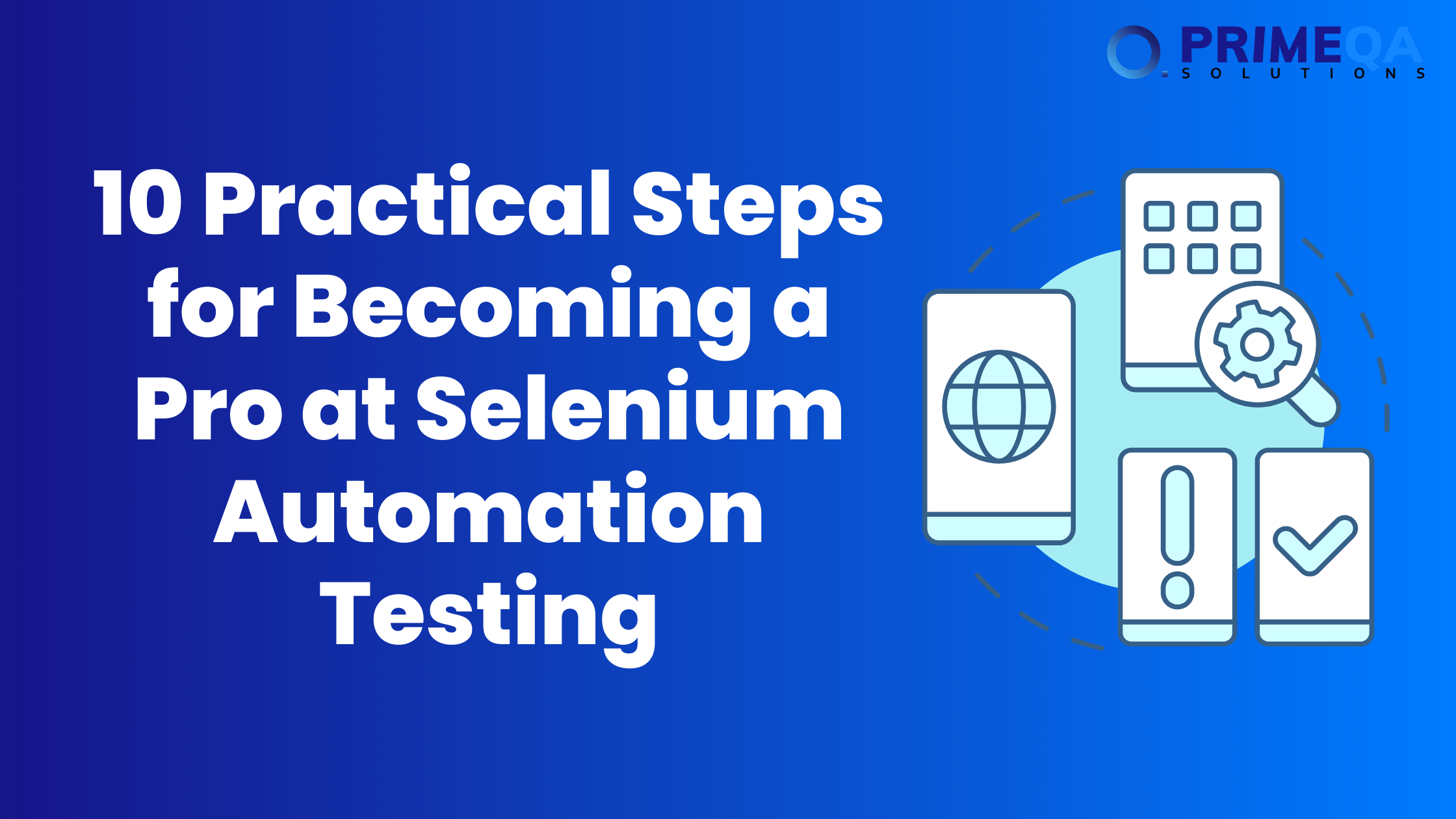The speed at which applications are being developed in these modern times is much faster, and this gives rise to the requirement of automation testing. Selenium stands as one of the most powerful options in the market for web application testing among many automation tools. It is strong, applicable in several areas, and easy to use, making it very useful to developers and testers. However, to extract the best of its abilities, a few recommended approaches must be followed. Consider these ten key approaches to ensure successful Selenium automated testing.
Clearly Defined Test Objectives: Before starting any Selenium automation, it should be clear what the test objectives are. Prioritizing test cases based on their importance, specifying functionalities to test, and defining the scope of testing are some of the critical aspects of the tests. Well-defined objectives guarantee better test coverage and targeted testing efforts.
Maintainable Test Framework: Long term sustainability of Selenium automation depends upon developing a maintainable test framework. Use the design patterns that are maintainable, readable, and reusable. These patterns have been the popular names of the “Screenplay Pattern” or the “Page Object Model” (POM). To maintain clean, well-organized code, keep test code modularized, reduce dependencies, and rewrite the code as frequently as possible.
Effective Test Data Management: Test data forms an essential part of automated testing. Use data-driven testing practices, externalize test data from separate files or databases, and generate test data dynamically on the fly as and when needed to enact measures to effectively manage test data. Ensure that the data is isolated to avoid data corruption in cross-tests.
Graceful error handling: Among other things, Selenium automation scripts fail due to pop-ups, timeouts, and element not found. Good exception handling approaches can help to handle exceptions with grace, contributing to even more increased test stability with the use of try-catch blocks, explicit waits, and unexpected alert handling.
Maximize Test Coverage: Maximize test coverage by running as many test cases as possible for different browsers, devices, and screen resolutions. Selenium Grid helps you run many browsers in parallel and shortens test execution time while maximizing coverage. The test cases are best arranged by order of importance and their level of risk to the company.
Cross-Browser Testing: Web apps must support a wide variety of browser versions and configurations. Through Selenium for cross-browser testing, test the entire cross-browser functionality and user experience of popular browsers such as Chrome, Firefox, Safari, and Edge. Leveraging browser compatibility testing tools, check the compatibility of the browsers so that those browser-specific issues are pinpointed and fixed.
Continuous Integration and Deployment (CI/CD): Make use of Selenium automated testing in your CI/CD to have a continuous feedback loop so that errors can be found as soon as possible. Use systems like Travis CI, GitLab CI, or Jenkins which will allow running automated tests for every commit to normalize integration. Automate deployment to standardize test conditions.
Detailed Test Reporting: Provide detailed test reports that list all the tests that were skipped, failed, or finished the execution of test cases. Develop aesthetically pleasing and interactive test reports with comprehensive screenshots, failure analysis, and test logs by taking the help of reporting frameworks such as ExtentReports or Allure. Stakeholders must have access to the reports so that they could make appropriate decisions for better decision-making and visualization.
Test Environment Management: Make use of decent and well-organized test environments to get the best from your test environment and ensure the results you have are sound enough. Use the automated setup and teardown to ensure you have a reliable and effective deployment of a test environment. To achieve ideal environment balance across each of the stages of the SDLC, make use of a separate test environment with containerization techniques such as Docker.
Continuous Training and Improvement: Keep in touch with the latest trends, new developments, and best practices in the industry by deploying Selenium-based automated testing. Connect with the leaders by attending the webinars, seminars, and online forums where people of the same belief gather. The testing practices must be reviewed and evaluated on a regular basis for the purpose of identification and redressal of various areas in need of improvement.
Conclusion
Well performed Selenium automation testing can drastically enhance the effectiveness, reliability, and quality of any online application. Testers can deliver the quality software within a faster development cycle; reduce the failures that are generated very frequently; and can make their Selenium automation easier if these ten best practices for them are followed. Remember that mastering Selenium automation requires constant learning, adaptation, and optimization.







